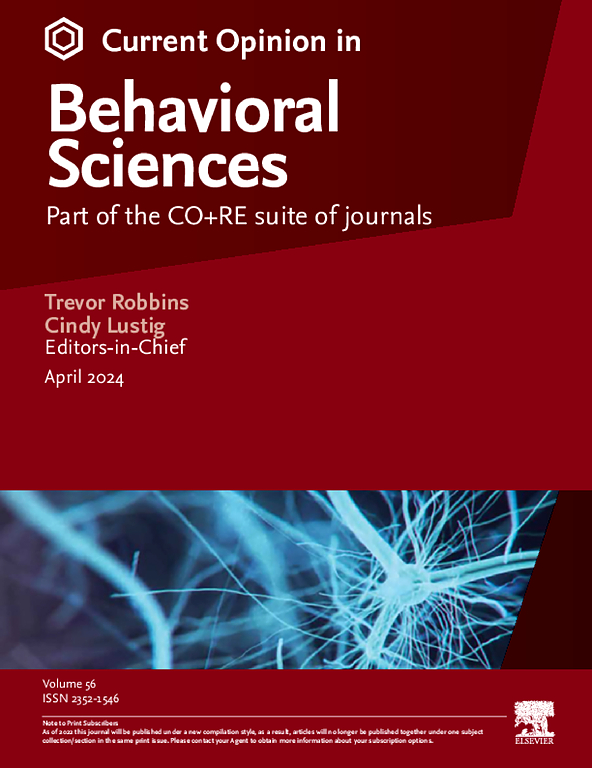Genetically encoded dopamine sensors: principles, applications, and future directions
IF 3.5
2区 心理学
Q1 BEHAVIORAL SCIENCES
引用次数: 0
Abstract
Dopamine is a crucial neuromodulator involved in various physiological and pathological states. Detecting dopamine dynamics with high spatial and temporal resolution serves as a fundamental basis for understanding the multifaceted functions of dopamine. Recently, emerging genetically encoded dopamine fluorescent sensors enable high spatiotemporal resolution in vivo detection of dopamine dynamics within the living brain. Here, we summarize the principles and features of genetically encoded dopamine sensors. We then highlight the advantages of these dopamine sensors through studies that have utilized them. Finally, we present perspectives on future directions for the development of next-generation dopamine sensors.
基因编码多巴胺传感器:原理、应用和未来方向
多巴胺是一种重要的神经调节剂,参与多种生理和病理状态。以高时空分辨率检测多巴胺动态是理解多巴胺多方面功能的基础。最近,新兴的基因编码多巴胺荧光传感器能够在活体大脑中实现高时空分辨率的多巴胺动态检测。在此,我们总结了基因编码多巴胺传感器的原理和特点。然后,我们通过利用这些多巴胺传感器的研究来强调它们的优势。最后,我们对下一代多巴胺传感器的未来发展方向提出了展望。
本文章由计算机程序翻译,如有差异,请以英文原文为准。
求助全文
约1分钟内获得全文
求助全文
来源期刊

Current Opinion in Behavioral Sciences
Neuroscience-Cognitive Neuroscience
CiteScore
10.90
自引率
2.00%
发文量
135
期刊介绍:
Current Opinion in Behavioral Sciences is a systematic, integrative review journal that provides a unique and educational platform for updates on the expanding volume of information published in the field of behavioral sciences.
 求助内容:
求助内容: 应助结果提醒方式:
应助结果提醒方式:


